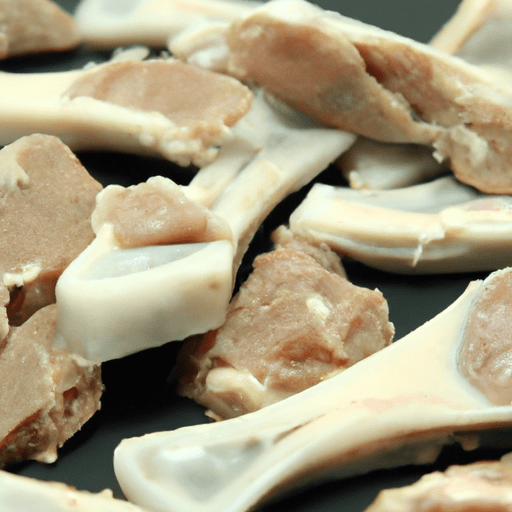Discover the Delightful World of Lamb Bones
When it comes to cooking, the starting point for flavor and depth often begins with the bones. One such bone that holds immense potential is the lamb bone. Known for its rich taste, versatility, and nutritional value, lamb bones have been a culinary staple in many cultures for centuries. In this blog post, we will explore the unique qualities, uses, and fascinating history of this underrated ingredient.
The Taste of Lamb Bones
Lamb bones are renowned for their distinctive and robust flavor. They possess a slightly gamy taste that is both savory and satisfying. The marrow, nestled within these bones, adds an extra layer of richness and complexity to broths, stews, and sauces. The flavor profile of lamb bones pairs exceptionally well with aromatic herbs and spices, making them a perfect base for creating flavorful dishes.
Using Lamb Bones in Cooking
Lamb bones can be implemented in numerous cooking techniques and recipes, enhancing the taste and texture of various dishes. Here are some popular uses:
1. Stocks and Broths
Lamb bones are often utilized to create hearty stocks and broths that form the foundation of many soups, stews, and sauces. Simmering these bones with vegetables and aromatics for a prolonged period allows the flavors to meld together, resulting in a liquid gold that adds depth and richness to any dish.
2. Roasting
When roasted, lamb bones become irresistibly flavorful and tender. These succulent bones make for an exquisite centerpiece on special occasions or can be used to enhance the flavor of roasted meats. The rendered fat from roasted lamb bones can be saved and used for sautéing vegetables or as a luscious drizzle over your favorite mashed potatoes.
3. Braising
Braising lamb bones involves searing them initially and then cooking them slowly in liquid until they become tender and packed with flavor. Aromatic spices, wine, or broth can be used as the braising liquid, infusing the bones with a delectable taste that can be further enjoyed by gnawing on their enticing goodness.
Nutritional Value of Lamb Bones
Aside from their superb taste and culinary applications, lamb bones offer various nutritional benefits. They are an excellent source of minerals like calcium, phosphorus, and magnesium, which actively contribute to maintaining healthy bones and teeth. Additionally, lamb bones contain collagen, a protein that supports joint health and promotes a youthful complexion.
A Glimpse into the History and Cultural Significance
Lamb has been a significant part of the human diet for thousands of years. The tradition of utilizing lamb bones in cooking can be traced back to ancient civilizations such as the Egyptians, Greeks, and Romans. Their reverence for lamb bones can be seen in historical texts and archaeological findings, highlighting their cultural significance and culinary prowess.
In many Middle Eastern and Mediterranean cuisines, lamb bones play a central role, becoming the star ingredient in hearty dishes such as lamb shank stew or the iconic Moroccan specialty, lamb tagine. The careful selection and preparation of lamb bones have been passed down through the generations, preserving the magnificent flavors and ancient traditions.
Conclusion
Lamb bones, with their remarkable taste, versatility, and historical significance, deserve a prime spot in your culinary repertoire. From enriching stocks and broths to imparting intense flavors through roasting and braising, these bones have the power to transform ordinary dishes into extraordinary culinary creations. So, the next time you come across lamb bones at your local butcher or farmer’s market, seize the opportunity to unlock their hidden potential and embark on a tantalizing flavor journey.
Lamb Bone
- Origin: Lamb bone refers to the bone of young sheep, specifically lambs under one year old. Lambs are domestic sheep that are typically less than one year old and are raised for meat.
- Common uses: Lamb bones are commonly used in various culinary applications, including making stocks, broths, and soups. The marrow inside the bone is also highly prized for its rich flavor and is often used in dishes like bone marrow custard or as a spread on toast. Additionally, lamb bones can be used to make bone broth, which is known for its nutritional benefits.
- Nutritional benefits: Lamb bones are a good source of various nutrients. They are primarily composed of calcium, which is essential for healthy bones and teeth, and phosphorus, which is important for energy production and cell function. Lamb bones also contain gelatin, a protein-rich substance that supports joint health, improves gut health, and aids in digestion. Additionally, the marrow inside the bone is rich in healthy fats, vitamins, and minerals.
- Unique properties: Lamb bones, like other animal bones, have a dense and sturdy structure that gives them some unique properties. When simmered over low heat for an extended period, lamb bones release gelatin, which gives broth a rich, silky texture and helps to thicken soups and sauces. The bone marrow, found in the center of the bone, is soft and buttery in texture when cooked and adds a depth of flavor to dishes.
- Historical significance: Throughout history, lamb bones have been used by various cultures for their culinary and medicinal properties. In traditional Chinese medicine, lamb bones are believed to nourish the kidneys and strengthen the bones. In Mediterranean cuisine, lamb bones have long been utilized in dishes like lamb stew or as a base for hearty soups. The use of lamb bones in cooking can be traced back centuries and continues to be valued for its flavor and nutritional benefits.




Use the share button below if you liked it.
It makes me smile, when I see it.